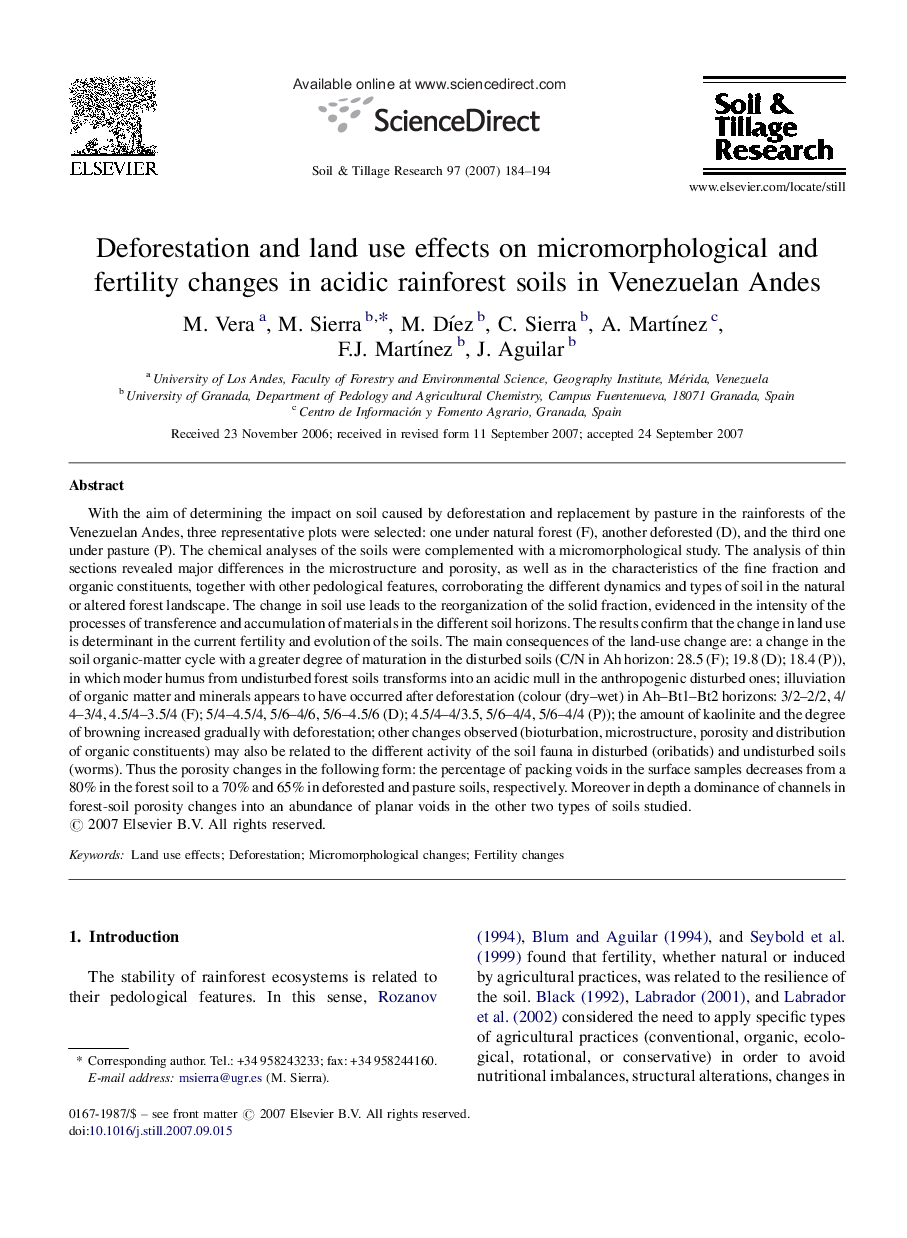| کد مقاله | کد نشریه | سال انتشار | مقاله انگلیسی | نسخه تمام متن |
|---|---|---|---|---|
| 306580 | 513103 | 2007 | 11 صفحه PDF | دانلود رایگان |

With the aim of determining the impact on soil caused by deforestation and replacement by pasture in the rainforests of the Venezuelan Andes, three representative plots were selected: one under natural forest (F), another deforested (D), and the third one under pasture (P). The chemical analyses of the soils were complemented with a micromorphological study. The analysis of thin sections revealed major differences in the microstructure and porosity, as well as in the characteristics of the fine fraction and organic constituents, together with other pedological features, corroborating the different dynamics and types of soil in the natural or altered forest landscape. The change in soil use leads to the reorganization of the solid fraction, evidenced in the intensity of the processes of transference and accumulation of materials in the different soil horizons. The results confirm that the change in land use is determinant in the current fertility and evolution of the soils. The main consequences of the land-use change are: a change in the soil organic-matter cycle with a greater degree of maturation in the disturbed soils (C/N in Ah horizon: 28.5 (F); 19.8 (D); 18.4 (P)), in which moder humus from undisturbed forest soils transforms into an acidic mull in the anthropogenic disturbed ones; illuviation of organic matter and minerals appears to have occurred after deforestation (colour (dry–wet) in Ah–Bt1–Bt2 horizons: 3/2–2/2, 4/4–3/4, 4.5/4–3.5/4 (F); 5/4–4.5/4, 5/6–4/6, 5/6–4.5/6 (D); 4.5/4–4/3.5, 5/6–4/4, 5/6–4/4 (P)); the amount of kaolinite and the degree of browning increased gradually with deforestation; other changes observed (bioturbation, microstructure, porosity and distribution of organic constituents) may also be related to the different activity of the soil fauna in disturbed (oribatids) and undisturbed soils (worms). Thus the porosity changes in the following form: the percentage of packing voids in the surface samples decreases from a 80% in the forest soil to a 70% and 65% in deforested and pasture soils, respectively. Moreover in depth a dominance of channels in forest-soil porosity changes into an abundance of planar voids in the other two types of soils studied.
Journal: Soil and Tillage Research - Volume 97, Issue 2, December 2007, Pages 184–194